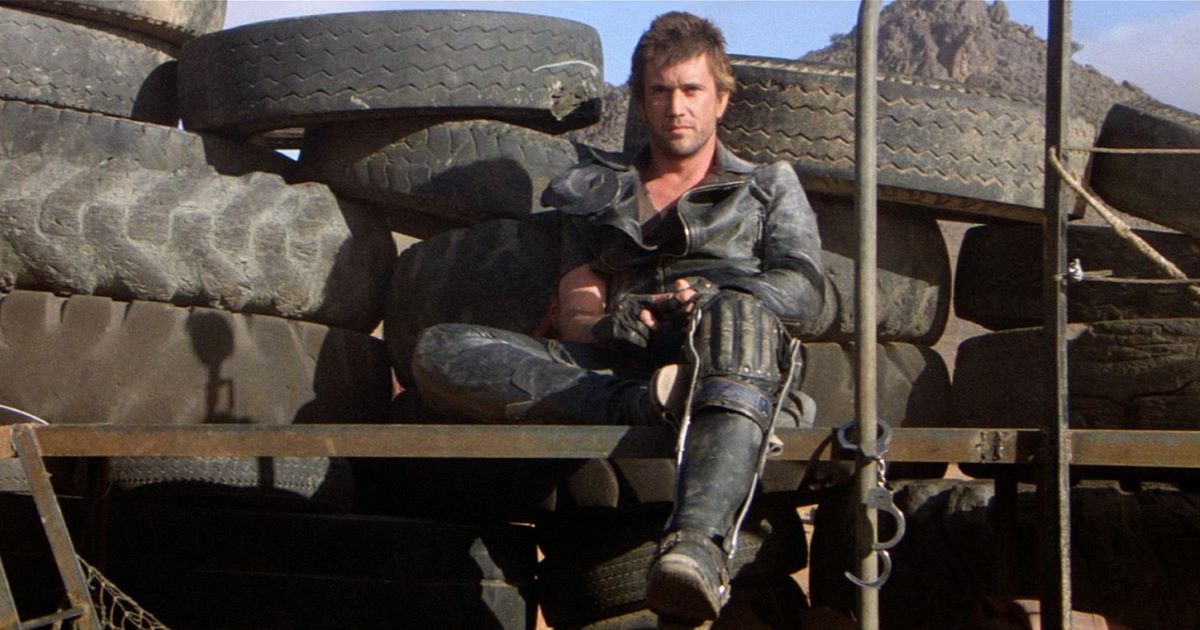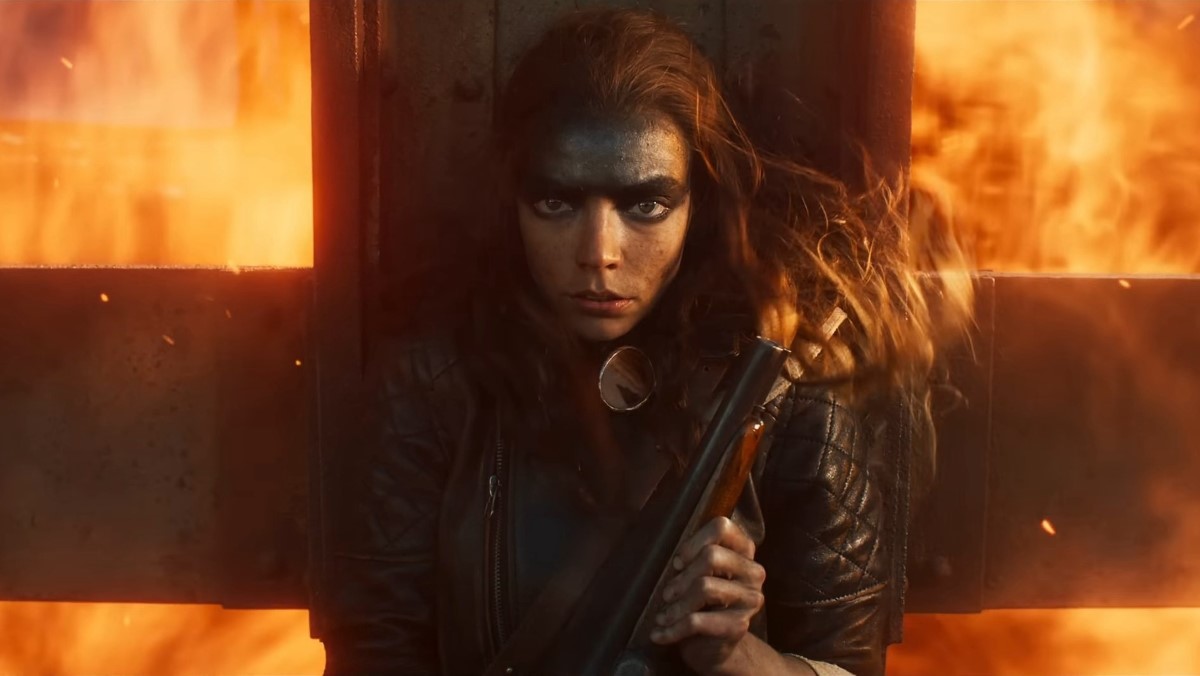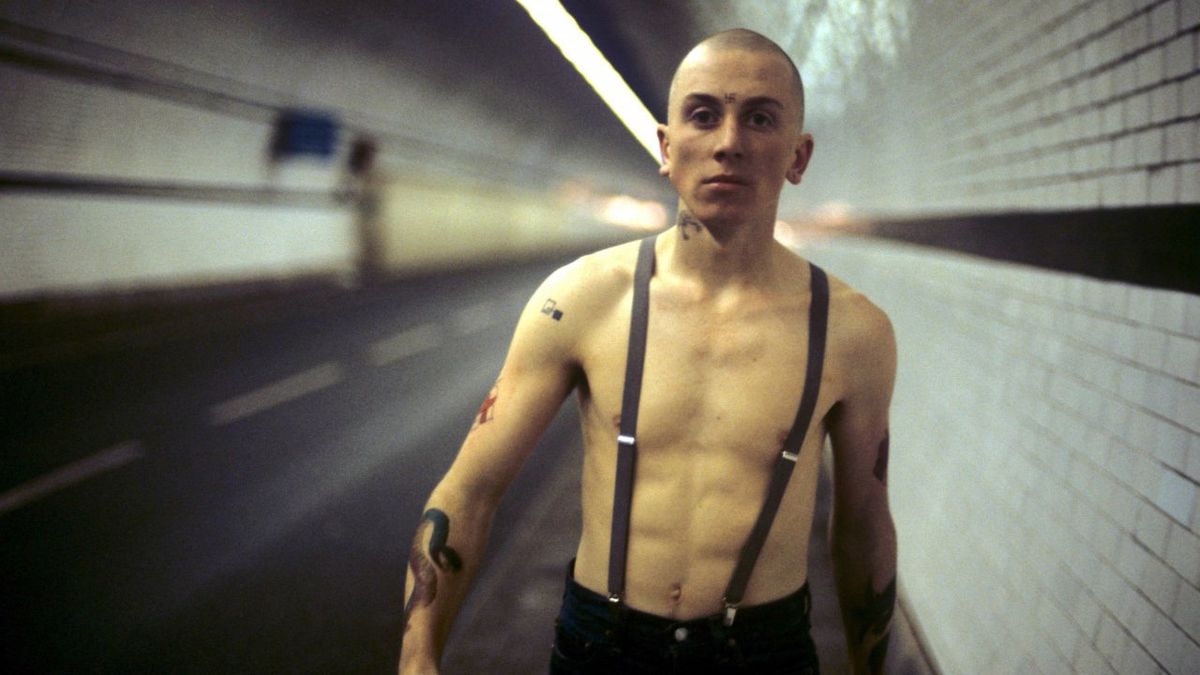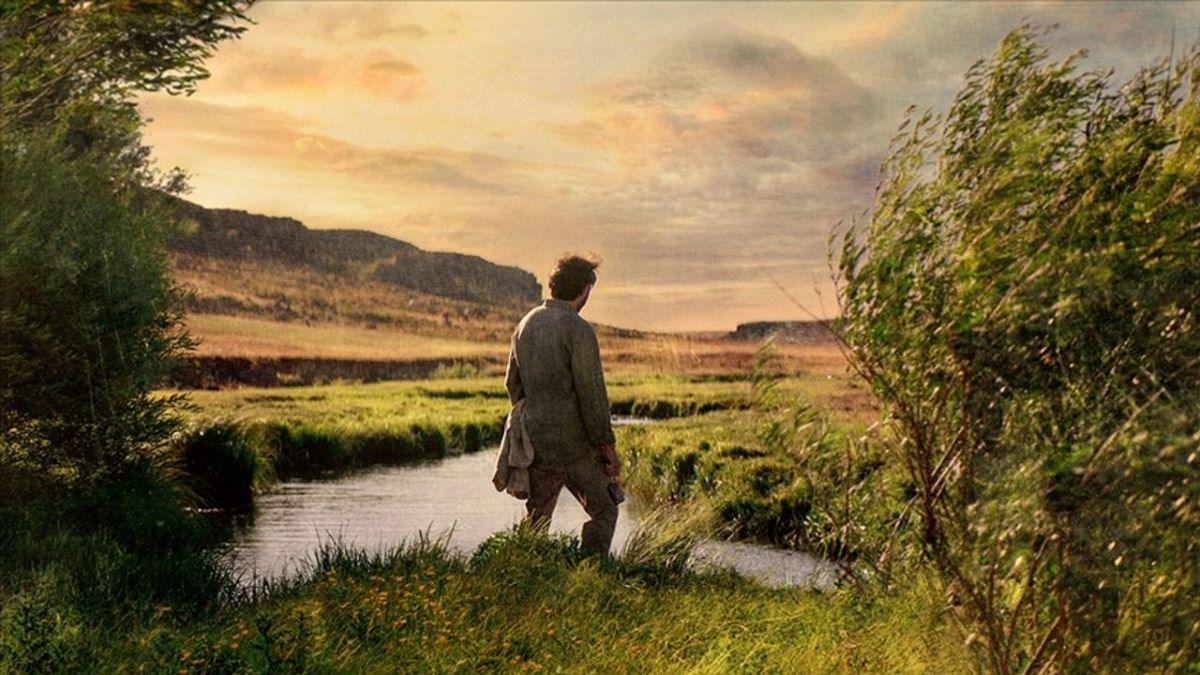In her review of The Road Warrior, Pauline Kael highlights the film’s intense and visually compelling nature, describing it as a seamless blend of exploitation filmmaking and artistic vision. Directed by George Miller, the movie is praised for its taut, dark visuals and unique lighting that evoke a surreal, torch-lit world. Set in a post-apocalyptic wasteland, the film amalgamates various action genres and creates an energetic, fast-paced experience. However, Kael criticizes it for lacking emotional depth and meaningful character development, pointing out its joylessness and superficial engagement with mythic heroism. Despite its kinetic action and impressive chase sequences, the film’s attempt at being more than a genre piece falls flat, leaving viewers feeling hollow. Kael concludes that while The Road Warrior is technically impressive, it ultimately fails to deliver the rich, character-driven storytelling that makes for truly great cinema.
* * *
Action
by Pauline Kael
The Road Warrior is intense, and it’s all of a piece. The Australian director George Miller grabs you by the throat—or lower—and doesn’t let go until it’s over. The picture probably won’t leave you feeling crummy the way junk-food movies usually do, because in visual terms, at least, The Road Warrior is terrific junk food. Miller must have the jittery nervous system of an exploitation filmmaker linked to the eyes of an artist. The picture has its own distinctive tautness (there’s nothing left to trim) and its own special dark, almost violet light that doesn’t suggest either night or day—it’s as if the outdoors were lit by torches. The film might be taking place in the lustrous, paranoid dreams of a man who had gorged, happily, on action movies—on Death Wish and Death Race 2000 and Walking Tall, on A.I.P. wheelers and samurai epics, on images of Vikings, Apaches, sadomasochists, and hot-rodders, on Bronson and Eastwood, on demolition derbies and medieval jousts. Set in a post-apocalyptic Wasteland, The Road Warrior is a mutant, sprung from virtually all action genres. It’s an amazing piece of work; it’s like “Starsky and Hutch” at switch blade speed. The jangly, fast editing suggests wit; so does the broad blacktop highway that cuts across the desert nothingness. Australia is certainly the right place for this fantasy—the parched horizons tell you why men would turn into motor maniacs. The Road Warrior, which is in Panavision and Dolby, could be the prototype of future road movies—perhaps of all action movies. But I didn’t find it great fun to watch. The crashes, the flames, and the persistent instant-myth music (you barely need to add water) are rather wearing. (If there were such a thing as Jungian music, this would be it—unless Carl Orff staked an earlier claim.) The picture doesn’t mean anything to me—not, at least, what it does for a lot of men I know, especially the ones who haven’t had a real fix since the last Sergio Leone picture, a decade ago. (At times, The Road Warrior could be a spaghetti Western directed by George A. Romero.)
That was Wasteland with a capital W. The Road Warrior, which in other countries is known as Mad Max 2, is a sequel to Miller’s first film, the 1979 Mad Max—an openly sophomoric bash. Mad Max was a revenge fantasy turned into a futuristic cartoon; the constant car-wrecking had a two-fisted deliriousness. It was of the exploitation genre that the critic David Chute, with no pejorative intention, calls “crash-and-burn,” and it was Australia’s biggest international box-office success ever (though not in this country: a jarringly dubbed version played here, on the theory that Americans wouldn’t be able to understand the Australian vulgate). But Miller—who, as he makes clear in an interview with Chute in the July-August Film Comment, looked for the reasons for the film’s success and believed he had found them when he was introduced to Jung, via Joseph Campbell’s The Hero with a Thousand Faces—became convinced that he had unconsciously struck something very deep. And so this new film comes equipped with a prologue describing its hero’s past in prose poetry. Sample: “In the roar of an engine, he lost everything . . . And became a shell of a man … a burnt out, desolate man, a man haunted by the demons of his past… A man who wandered out… into the Wasteland … And it was here, in this blighted place, that he learned to live again.” You can hear those dots, and the words are spoken in fruity, cultivated tones.
Maybe Miller’s belief that he has tapped into the universal concept of the hero is what makes The Road Warrior so joyless. It isn’t simply stupid—it’s trying-to-be-smart stupid. It’s abstract in an adolescent way. And though Max, the road warrior (Mel Gibson), is mythologized in that prologue, he doesn’t have anything particularly heroic to do. The Road Warrior is much hipper than a Western such as George Stevens’ 1953 Shane (which was already in the mythmaking business: Alan Ladd’s drifter was meant to suggest Galahad on the range), but it follows the same basic pattern. The boy whose piteous cry “Shane!” clung to people’s ears when the picture ended has become the Feral Kid (Emil Minty), a wolf-boy orphan with a deadly metal boomerang for a toy, who attaches himself to the loner Max. And the apathetic Max encounters a new version of the homesteaders: some few decent men and women have survived the Third World War (two big powers fighting over oil) and have banded together in a small, walled encampment around a dinky refinery, where they have been refining the last remaining oil into gasoline and hoarding it, so that they can get in their battered vehicles and make a run to the seashore, two thousand miles away. These homesteaders are under siege by punkish post-nuclear-war bikers—savages on motorcycles, slightly updated from their Roger Corman days. Rampaging vandals who tear people apart for pleasure, they’re led by a masked body builder, the Humungus. He wears leather-and-metal straps crossing his muscles, and his men are comic-strip terrors, each accoutred in his own rough-trade style—fashion plates of the newest in nightmare adornment. The huge, garishly strong Wez (Vernon Wells), whose yellow-haired punk boyfriend sits behind him on his bike, sports a fire-red Mohawk strip of hair on his shaved head, plumes and football pads at the shoulders, a studded codpiece, and a hideously businesslike metal crossbow on his gauntlet. His buttocks are bare. These nouveau barbarians, who look ready to storm an s-m bar, are determined to get the homesteaders’ gas, and have set up camp just a few miles away from the enclosure.
Miller doesn’t show any interest in characterization, except for what can be obtained by astute casting. His performers aren’t required to act—only to present their faces and bodies to the camera. Yet he has a gift for placing them in the very wide frame so that even if they are almost silent we respond to them as individuals. The people at the refinery are decked out in what looks like homespun burlap (and, when the weather changes, what looks like homespun fur)—they’re clothed in virtue, like early Christians in a De Mille epic—but each face makes an impression, no matter how brief its screen time. And there’s a real film instinct at work in Miller’s treatment of Bruce Spence, who plays a stork-legged, rotten-toothed aviator who uses snakes to guard his autogyro. The first time we see him, he appears out of the sand, like a trapdoor spider. This fellow looks like an assemblage of hopeless parts, and in most movies he’d bite the dust, yet with his gummy, horsey grin, his overexcited jumping up and down (is there a punk record playing in his head?), and his talking to himself—muttering about the things he remembers from the era when there were arts and traditions—he somehow survives. He’s like his ragtag plane and the other pieced-together, souped-up vehicles that can still go. By the end, he has even managed to get himself a pretty girl, with a loyal spirit. Bruce Spence’s aviator is more hopeful and tenderhearted and adaptable than Mel Gibson’s glum Max, whose parts match up quite handsomely.
Bruised and puffy, Max has no edges, he stands about blandly, uncertainly, on the sidelines—Brutus in leather armor—while others make decisions. His finest moment—and perhaps Miller’s most lyric, fairy-tale image—is totally passive: the wounded Max, carried on the tiny autogyro, floats high above the blasted desert landscape and the human debris. This vaguely Wagnerian shot is beautiful on its own; it doesn’t have any dramatic meaning, because we don’t know what has been going on in Max’s mind. And when he is partly healed and has decided to join the homesteaders, who have nursed him, he still seems split—it isn’t clear whether he has become fond of the good folk or just wants revenge on the bikers. It’s because Mel Gibson is carrying all of George Miller’s mixed ambitions on his shoulders that he has no stature as a hero. And it’s because of this underlayer of indecisiveness that the action doesn’t have a real kick. We’re told in the prologue that Max has lost his reason for living; this film is supposed to be about his spiritual rebirth and the first stirrings of a new civilization, but he remains sullen and withdrawn. And civilization may be a long time coming: Miller, following the moldiest Hollywood tradition, cues us to exult along with the good guys whenever one of them kills a baddie. The picture gets whatever charge it has from the spectacle of devolution.
Miller is barely in his mid-thirties (he studied medicine and worked as a doctor while he was making short films that prepared the way for Mad Max), yet if you think of him as one of the kinetic moviemakers, such as John Carpenter and Romero, he’s a giant. And his chase sequence with Max driving an oil truck makes the comparable truck chase in Spielberg’s Raiders of the Lost Ark look lame—as Spielberg, who has expressed admiration for Miller, might be the first to acknowledge. But Miller apparently doesn’t see the limitations of the kind of material he’s working with, and he has given it an art-film aspect. I don’t mean the visionary shots, such as the bikers circling in the dust (as if they had all the gas in the world), riding round and round the enclosure, like old movie Indians on horses terrorizing the fort. Since this is basically a mindless film, I don’t fault Miller for sacrificing credibility to beauty. And it’s amusingly sloppy that in order to stage the climactic chase and battle, which is a variant of the settlers in their wagon train heading out through Indian territory, Miller asks us to accept a piece of visual idiocy: the refinery is surrounded by flat, dry desolation as far as the eye can see, yet when Max believes he’s leading the homesteaders on their run he heads straight for the bikers’ campfires, as if that were the only route he could take. What I regret is George Miller’s thinking there’s mythic depth in sickly-stale elements—the lonely Feral Kid who worships Max, and the aviator’s devotion to Max (like Walter Brennan’s fealty to Bogart), and Wez’s love for his blondie, and Max’s not allowing himself to have any fellow-feeling except for his pooch (a greatlooking bandy-legged Australian Cattle dog, with a black monocle around one eye, a white around the other), and all the other familiar bits.
Miller gets effects, all right, but they’re not the perverse, erotic effects that seem promised; the picture is weirdly not kinky—maybe because he’s trying to be seriously kinky. The Road Warrior is sappy-sentimental, and, for all its huffing and puffing, it doesn’t blow any houses down; it has no resonance of any kind. Something rather solemn comes across in the prologue and the afterword, and in the use of actual documentary shots of warfare to substantiate the film’s apocalyptic claims (a terrible mistake in judgment for a comic-strip movie, no matter how elegant), and in the important-person, Charlton Heston-like poses that Max assumes—especially the cantilevered-hip position, with all the weight on one leg. Miller consciously uses Mel Gibson as an icon; that’s enough to squeeze the juice out of any actor.
At a point near the end of the picture, after the tanker chase, the limitations of action-genre moviemaking stare right out at Miller: this is when we discover that while we’ve been watching Max driving, and fighting off the big brute Wez, the important things have been happening elsewhere. The decent folk in burlap have used their heads and planned their strategy; what we were watching was the kid stuff—“action.” For once, Miller seems at a loss; he doesn’t appear to know whether or not this revelation should be treated as a joke on Max, and so he muffles the scene. The script (by Terry Hayes and Miller, with Brian Hannant) has provided this ironic episode—a twist on The Treasure of Sierra Madre—that undercuts Miller’s serious approach to the crash-and-burn genre, but as a director he’s no longer willing to laugh at himself, and he retreats to the safety of muzzy mythologizing. And so the wolf boy (who is our narrator) grows up and, like many of his kind, learns to talk like a BBC announcer, but with an Australian accent. And Max, who has to remain a loner so he’ll fit the Jungian hero pattern, is left behind, brooding. He’s like Steve McQueen at the end of each episode of his old bounty-hunter TV series, with nothing to look forward to next week but more killing.
George Miller is enormously gifted as a moviemaker, and he has fused his crazily derivative material; this cultural compost heap has yielded a vision. But when you get caught up in his way of thinking, you can convince yourself that the more indebted to old movies your material is, the richer it is, and the more archetypal—and that junk food is the only true nourishment. There’s nothing under the film’s cliches—nothing to support the visceral stress that Miller’s single, continuous spurt of energy puts on us. And there’s no humor, finally, under that incessant music. If Max had it in him to laugh at how he was used—to laugh the way Walter Huston did at the end of Sierra Madre—there might be some point to the picture. The introspective Max never gets past his own joylessness. We’re supposed to regard him as a hero because he’s a fearless driver. Is he fearless because, not caring if he lives or dies, he has less to lose than his enemies? Or is it that he’s a survivor because he’s alone? Either way, he never acknowledges that he has anything at stake, and he’s no hero to me. This is a phony genre picture. Genre pictures are meant to be entertaining; this one wants to be much more. It’s an abstract presentation of male paranoid fantasizing, with an air of intelligence. The male audience can think it’s prophetic (Max was used); maybe the male audience can even think it’s deep. (It’s definitely not a picture for heterosexual couples on dates.)
We may not feel crummy after the movie, but we feel hollow. I would think that even those who are elated while they’re watching it feel hollow. The Road Warrior is for boys who want to go around slugging each other on the shoulder and for men who wish that John Wayne were alive and fifty again.
The film has been greeted by superlatives from reviewers, because of what I think may be a tragic misunderstanding of the appeal of movies in earlier periods: the widely expressed idea that what people used to go to the movies for was simply action and fireworks, a basic, easy-to-follow story, and the good winning out over the bad—that all they wanted was genre films. It might be closer to the facts to say that people accepted the routinized genre pictures when they couldn’t get something wonderful, because they understood that great movies didn’t come along every day. It’s scary to read critics praising action pictures that are no more than embodiments of male dynamism and suggesting that these are the only real movies—what the people want—even after TV has done action to death. I know that I didn’t go to the movies to see car crashes or galloping horses or gangsters shooting each other, though I often went to films in which these things happened; I went because I wanted to “see the picture”—to become involved in the characters’ intertwined lives and to experience the worlds that all the hacks and craftsmen and artists who worked in the movies could bring into being. We’re often told now that moviegoers never sought anything more than they get from Star Wars or Raiders, and I want to testify that this is a falsehood. It’s one that movie and TV executives have been known to embrace. When critics in the press and on TV embrace it, they’re engaged in another form of shoulder- punching.
The New Yorker, September 6, 1982





